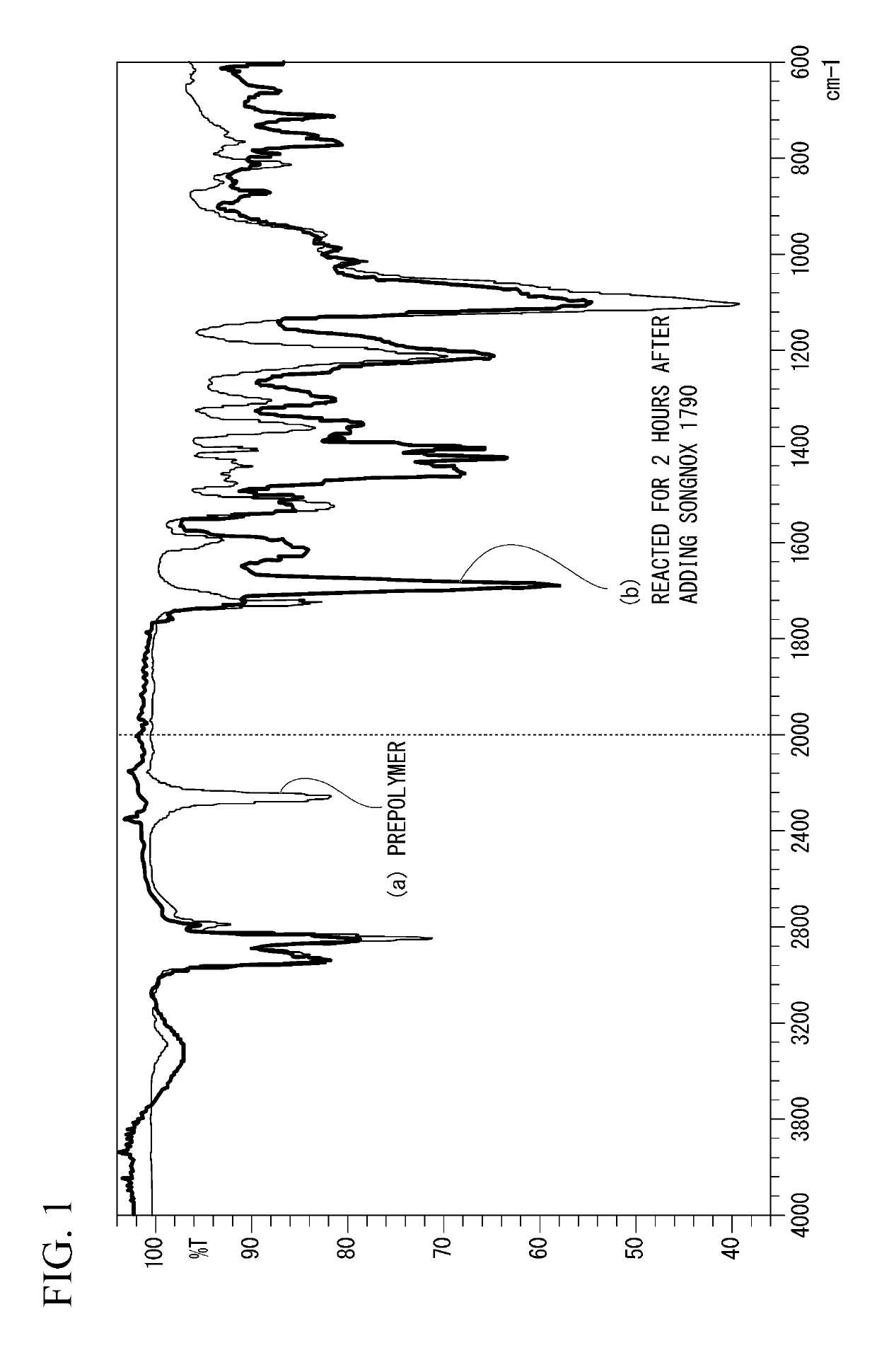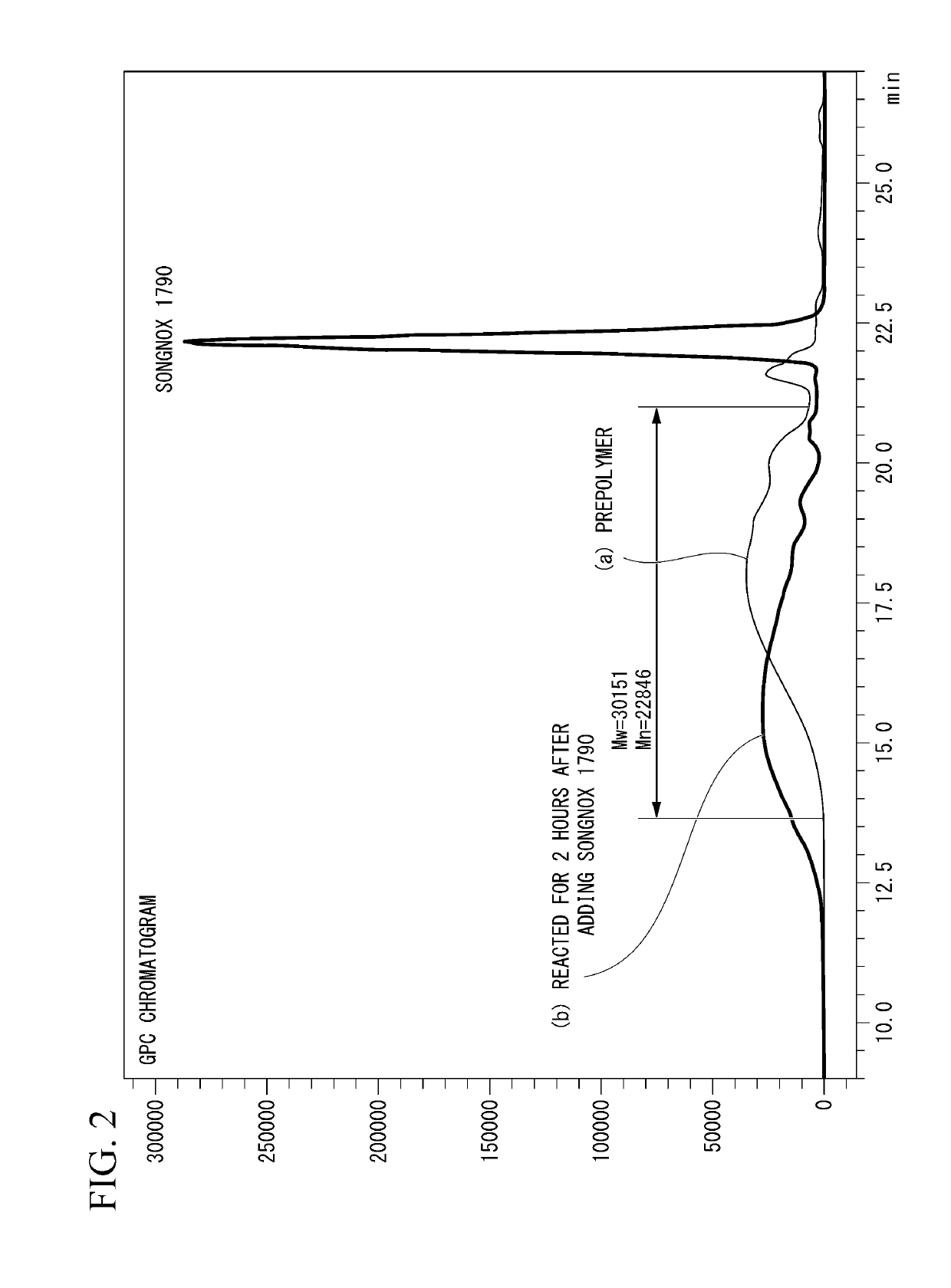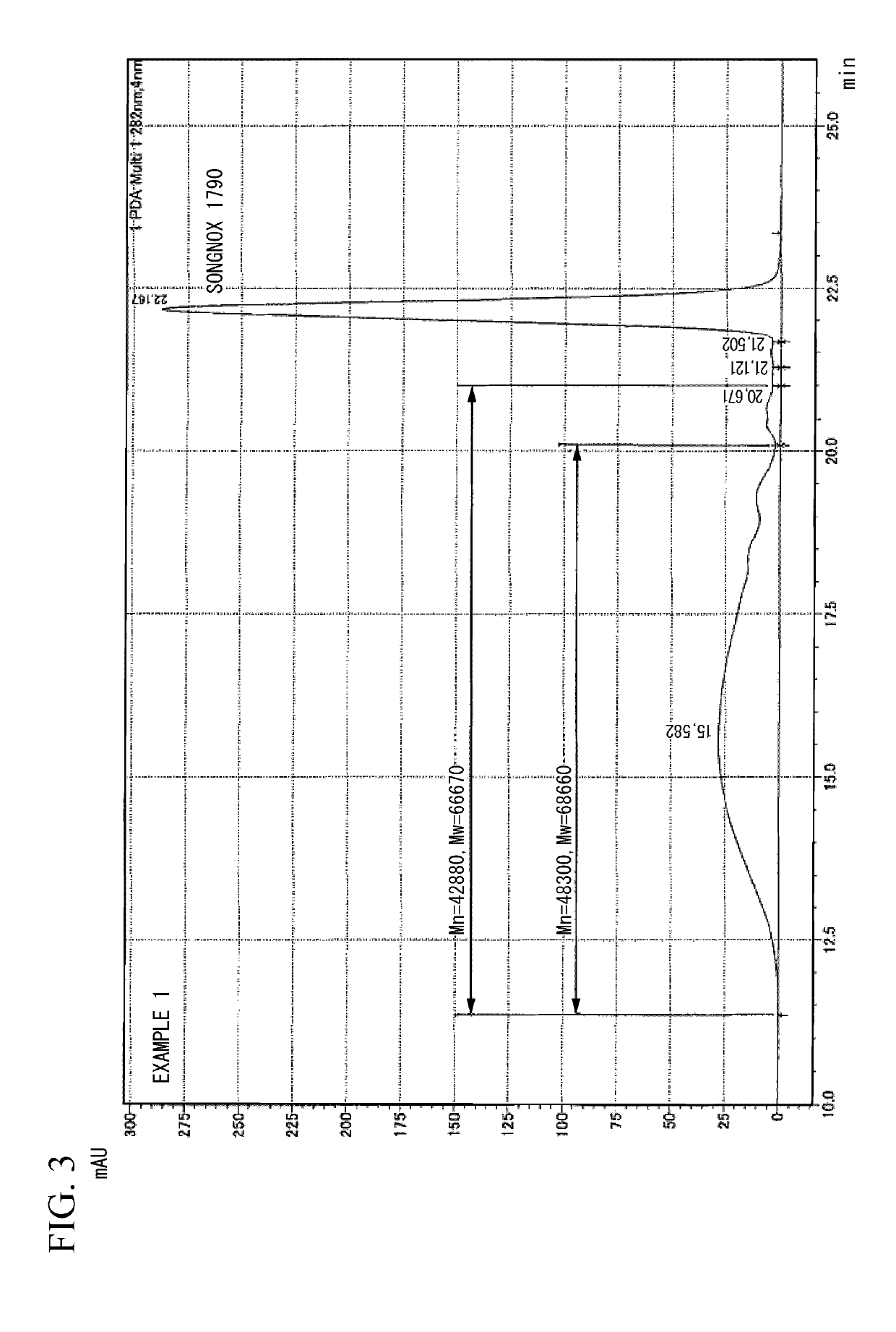Method for producing antioxidant and method for producing elastic polyurethane fiber
- Summary
- Abstract
- Description
- Claims
- Application Information
AI Technical Summary
Benefits of technology
Problems solved by technology
Method used
Image
Examples
example 1
[0147]233 g of polytetramethylene glycol having a number-average molecular weight of 1,850 and 56 g of 4,4′-diphenylmethane diisocyanate were reacted under stirring in a dry nitrogen atmosphere for 3 hours at 70° C. to obtain a urethane prepolymer (PUPP) having isocyanate groups at both terminals. The IR of this urethane prepolymer (PUPP) is shown in (a) of FIG. 1, and the GPC chromatogram is shown in (a) of FIG. 2. The weight-average molecular weight (Mw) of the urethane prepolymer (PUPP) was 30,151 and the number-average molecular weight (Mn) was 22,846. A small peak at Rt (retention time)=21.68 min belongs to the unreacted 4,4′-diphenylmethane diisocyanate.
[0148]After cooling the urethane prepolymer (PUPP) to room temperature, a solution obtained by dissolving 211 g of 1,3,5-tris (4-tert-butyl-3-hydroxy-2,6-dimethylbenzyl) isocyanuric acid (product name: Songnox 1790 (in the aforementioned formula (5) wherein k=3), manufactured by Sonwon Industrial Co., Ltd.) in 500 g of dimethyl...
example 2
[0152]A polyurethane-based hindered phenol antioxidant (AO2-1) was produced in the same manner as that described in Example 1, with the exception that a solution obtained by dissolving 177 g of triethylene glycol bis-3-(3-tert-butyl-4-hydroxy-5-methylphenyl) propionate (product name: Songnox 2450 (in the aforementioned formula (5) wherein k=2), manufactured by Sonwon Industrial Co., Ltd.) in place of 1,3,5-tris (4-tert-butyl-3-hydroxy-2,6-dimethylbenzyl) isocyanuric acid (product name: Songnox 1790, manufactured by Sonwon Industrial Co., Ltd.) in 466 g of dimethylacetamide (DMAc) so as to obtain a DMAc solution having a concentration of the total solid content of 50% by weight was added to the urethane prepolymer (PUPP) which was cooled to room temperature. This solution was heated at elevated temperature in the same manner as that described in Example 1 to confirm the disappearance of the isocyanate group by IR and subsequently cooled to room temperature. The weight-average molecul...
examples 4 to 11
[0160]Polyurethane-based hindered phenol antioxidants (AO-3 to AO-10) were prepared in the same manner as that described in Example 1, using the combinations of the diol, and the diisocyanate and the phenol compound (hindered phenol antioxidant) shown in Table 1. Abbreviations in Table 1 are shown in Table 3. The number-average molecular weight and the amount of the OH group are shown in Table 2.
TABLE 1Terminalphenol-PUPPcontainingMolarreactionPUPPTem-polyurethaneDiolIsocyanateratiotemper-synthesisPhenolMolar ratiopera-Synthesiscompound(A)(B)(B) / (A)atureperiodcompound (C)(C) / [(B) − (A)]CatalysttureperiodExample 1AO-1PTMGMDI1.870° C.3 hoursSongnox 17903.0None70° C.2 hoursExample 2AO2-1PTMGMDI1.870° C.3 hoursSongnox 24503.0None70° C.2 hoursExample 3AO2-2PTMGMDI1.870° C.3 hoursSongnox 24503.0None70° C.2 hoursComparativeAO2-3PTMGMDI1.870° C.3 hoursSongnox 24503.0None70° C.2 hoursExample 1Example 4AO-3PTMGMDI1.870° C.3 hoursIONOL LC3.0None70° C.2 hoursExample 5AO-4PTMGMDI1.870° C.3 hours...
PUM
| Property | Measurement | Unit |
|---|---|---|
| Percent by mass | aaaaa | aaaaa |
| Temperature | aaaaa | aaaaa |
| Temperature | aaaaa | aaaaa |
Abstract
Description
Claims
Application Information
 Login to View More
Login to View More - R&D
- Intellectual Property
- Life Sciences
- Materials
- Tech Scout
- Unparalleled Data Quality
- Higher Quality Content
- 60% Fewer Hallucinations
Browse by: Latest US Patents, China's latest patents, Technical Efficacy Thesaurus, Application Domain, Technology Topic, Popular Technical Reports.
© 2025 PatSnap. All rights reserved.Legal|Privacy policy|Modern Slavery Act Transparency Statement|Sitemap|About US| Contact US: help@patsnap.com



